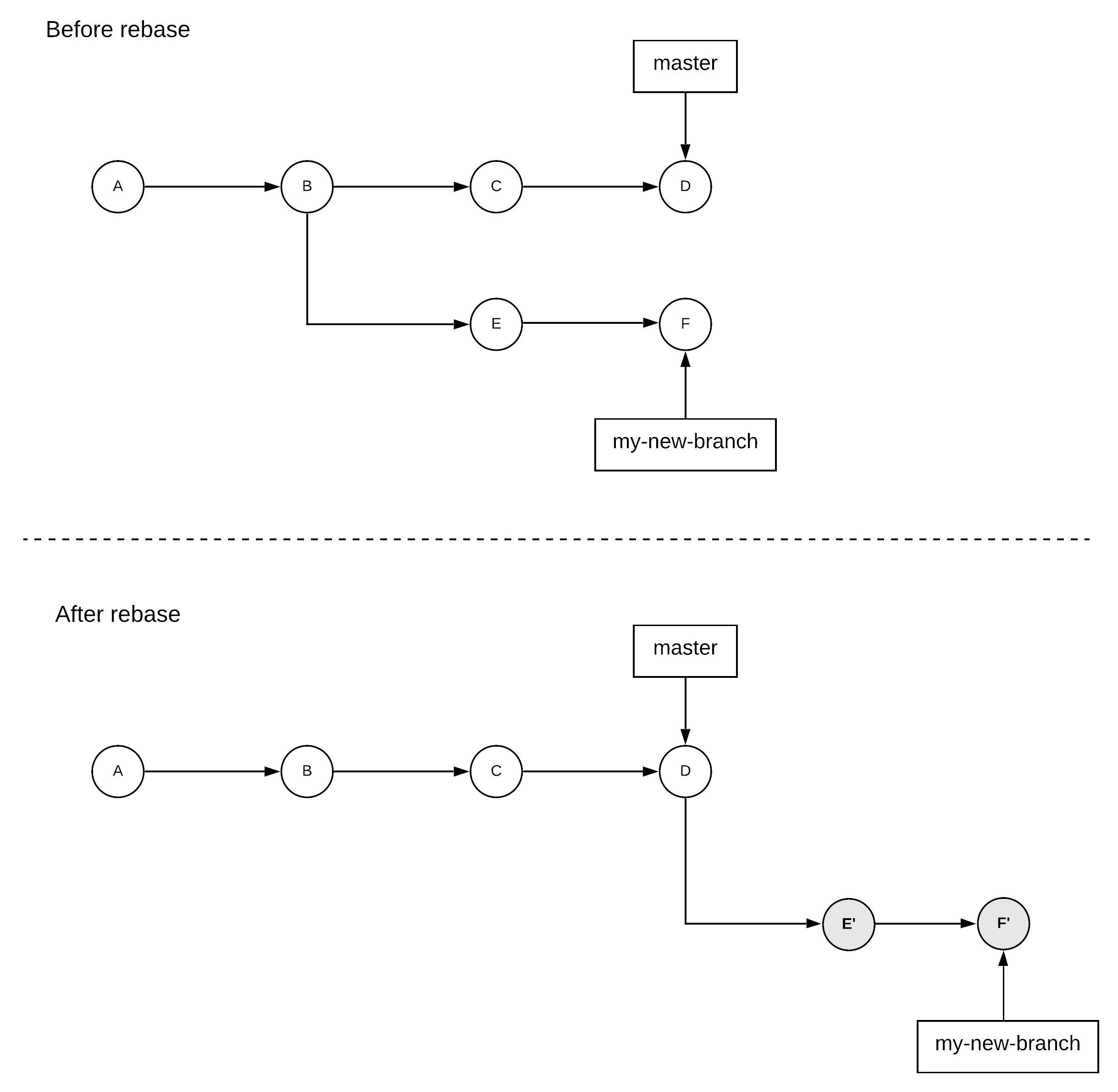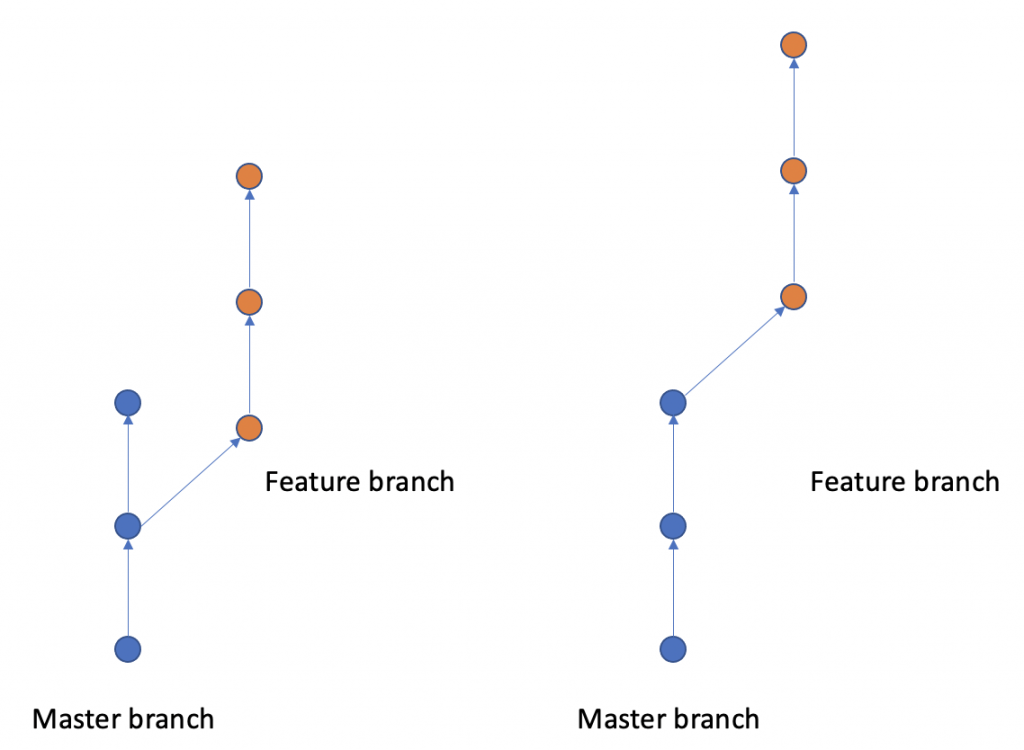

These are the steps to rebase a branch in Git. *Notice in the git tree structure we have a login-page branch and a master branch. Example of a repository with a login-page branch For the sake of making it simpler to follow, we are going to have as a reference the following diagram. Now that you understand what the rebase does in Git, we will show you the steps to follow when starting a rebase. However, to start a rebase the only thing you should know is the name of the branch you are rebasing onto. The rebase commands have different configurations that can be used prior to starting rebasing.

In other words, you would get all of the latest changes from master branch in feature A branch as if those commits happened first prior to you making commits to feature A branch, making sure feature A branch is up to date with master branch.
#Rebase on master git update#
If you use the rebase command onto master branch, you will update feature A branch base commit.

Hence, in case you decide to merge feature A branch to master, there is a possibility of running into conflicts. However, since there are new changes in master branch after merging feature B branch, feature A branch no longer has the latest changes from master branch. Meanwhile, you have been working in feature A branch. Hence, it is normal for that person to merge the feature B branch to the master branch to update the main codebase typically used for production deployments. In this scenario, we are going to assume someone in the team has finished their development in feature B branch. Let’s say, you created feature branch A, and someone else created feature branch B. Whenever we create a feature branch, the feature branch is created off of a specific branch, typically the latest commit of the master branch.Īs there are more people working on a project, other feature branches are created.
#Rebase on master git software#
And of course there are lots of options on merging and rebasing I would advise you to look more into it they are very useful.During software development, it is typical to have a master or a main branch and multiple feature branches. If you do not have any conflict you're good to go and you can push it to the server, if you do you only have to resolve it and you can push it normally to the server as well since now you resolved the conflicts on a new commit, there is nothing diverging between your local branch and your remote one.Īnd that's it, I hope you find this helpful, you can probably do this in fewer steps, but these are just the steps I like to make, they may not be the shorter ones but I feel safer this way. To do this you can just go to your master branch and update it: Using this approach you'll end up with a merge commit on your history, and the log can get confusing over time, but there are some advantages on this as well, if you do have a conflict, you need to resolve it only once, when you're merging, if you have a conflict when you're rebasing, you may have to resolve it multiple times, since it will try to apply your commits over the new remote commits one by one. Or you could delete your remote branch end push it normally back to the server: (BE CAREFUL! this command will override your remote branch, it's very dangerous make sure everything went fine on your rebase before using this command.) If everything runs without conflict you're good to go. It will run a git fetch with merge behind the scenes on your git master branch. I would do like this, on your local repository I would go to the master branch: I like rebase because this ends up leaving a cleaner history, it does that because it removes my changes from the branch, applies the remote changes and then apply my changes back on top, but, doing that, it changes the commit hashes and it does not match with the ones you had previously for the same commit, for that reason you have to either push it using -f or delete the remote branch and creating it back again. I personally like doing rebase more, but only if I'm sure no one else is using the branch which I'm pushing to on the remote.

Some could say rebase is not a good approach once you have already pushed you branch to the server, if that's the policy of your repo so you would have to merge the master into your branch and than push it back to the remote. For instance, if you rebase your branch you'll not be able to push it back to the server, you would have to either push it using -f or deleting the remote branch and push a new one. And that may depend on your repository policy.
#Rebase on master git series#
There are a series of methods you could apply here to accomplish what you want.


 0 kommentar(er)
0 kommentar(er)
